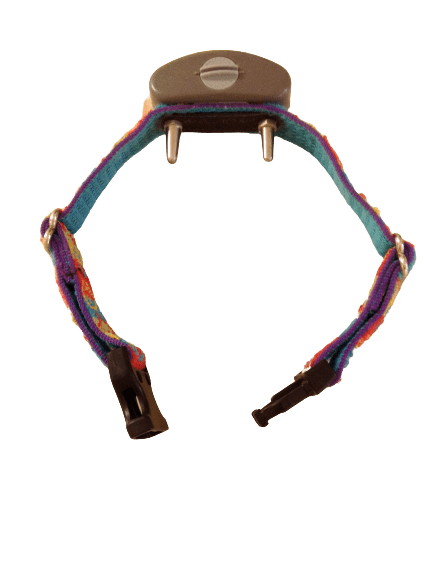How To Use A Shock Collar to Train Dog?
As a dog owner, you may need help with obedience training for your dog. You may have heard of shock collars, also known as electronic collars, as a training method. But how do you use a shock collar for dog training? This article will explore the proper way to use a shock collar and the benefits and risks associated with this training method.
Suppose you’re considering using a shock collar for dog training. In that case, it’s important to understand how to use it safely and effectively. While shock collars can be an effective tool for correcting unwanted behavior in dogs, they can also cause harm if used improperly.
In this article, we’ll provide some tips and guidelines for using a shock collar for dog training.
What is Shock Collar?

A shock collar is a collar that has a small electronic device attached to it that delivers an electrical pulse to your dog. This pulse can range in intensity from a mild vibration to a strong electric shock. Shock collars are a training tool to discourage unwanted behavior in dogs, such as barking, jumping, or pulling on a leash.
How Does a Shock Collar Work?
A shock collar delivers an electric shock to your dog through the collar’s electronic device. The intensity of the shock can be adjusted to suit your dog’s size and behavior. Some shock collars have a remote control that allows you to administer the shock manually.
In contrast, others have sensors that detect when your dog is exhibiting unwanted behavior and deliver the shock automatically.
Benefits of Using a Shock Collar for Dog Training
One of the benefits of using a shock collar for dog training is that it can be an effective tool for stopping unwanted behavior quickly. For example, if your dog is barking excessively, you can use the shock collar to deliver a mild shock that will stop the barking.
Shock collars can also be effective for training dogs to stay within certain Another benefit of using a shock collar for dog training is that it can be less physically demanding for the owner.
Instead of physically restraining or correcting the dog, the shock collar can be used from a distance to discourage unwanted behavior. boundaries, such as staying within a fenced yard.
Risks of Using a Shock Collar for Dog Training
While shock collars can be effective for training dogs, there are risks associated with their use. One of the risks is that the shock collar can cause physical harm to your dog if it is not used properly.
It is important to use the shock collar according to the manufacturer’s instructions and never to use it in the highest setting.Another risk of using a shock collar for dog training is that it can cause psychological harm to your dog.
If the shock collar is used too frequently or at too high of an intensity, it can cause your dog to become fearful or anxious. It can lead to further behavior problems, making obedience training more difficult.

How to Use a Shock Collar for Dog Training? – 6 Tips
If you have decided to use a shock collar for dog training, it is important to use it properly to avoid causing harm to your dog.
Here are some tips to follow when using a shock collar:
- Choose the right collar: choose a collar that is the right size for your dog and appropriate for the behavior you want to correct.
- Read the instructions: Before using the shock collar. Read the instructions carefully and understand how to use it properly.
- Start with the lowest setting: Begin by using the shock collar on the lowest setting and gradually increase the intensity if necessary.
- Use positive reinforcement: Using positive reinforcement, such as praise or treats, with the shock collar to reinforce good behavior is important.
- Avoid overuse: Do not use the shock collar too frequently or at too high of an intensity, as this can cause physical or psychological harm to your dog.
- Use it as a last resort: Use the shock collar as a last resort after other training methods have failed.
How to Choose the Right Shock Collar?
When choosing a shock collar for your dog, selecting one appropriate for your dog’s size and behavior is important. Most shock collars are designed for dogs weighing at least 10 pounds.
Many manufacturers provide guidelines for selecting the right collar based on your dog’s weight and breed.
Some collars also offer different levels of stimulation, such as vibration or audible tones, which may be more suitable for some dogs.
Introducing the Collar to Your Dog
Before using a shock collar on your dog, it’s important to introduce the collar to your dog in a positive and non-threatening manner. Allow your dog to sniff and explore the collar.
Give your dog plenty of treats and praise to help them associate the collar with positive experiences. You may also want to practice putting the collar on and removing it several times before using it for training.
Setting the Correct Level of Stimulation
The stimulation level delivered by a shock collar should be set based on your dog’s temperament and behavior. Start with the lowest level of stimulation and gradually increase the level until you find the most effective level for your dog.
It’s important to note that using a shock collar for dog training is not to cause pain or discomfort but to get your dog’s attention and correct unwanted behavior.
Safety Precautions
When using a shock collar for dog training, it’s important to follow safety precautions to avoid causing harm to your dog. Never leave the collar on for extended periods; always remove it when your dog is not being actively trained.
Never use a shock collar as punishment; always use it responsibly and follow the manufacturer’s instructions
Avoid Using the Shock Collar as the First Option
Before considering using a shock collar for your dog, it’s important to try other training methods first. Shock collars should not be the first option for correcting unwanted behavior in dogs.
Positive reinforcement techniques such as treats, praise, consistent training, and patience are often more effective in changing a dog’s behavior.
Understand the Purpose of the Shock Collar
The purpose of a shock collar is to interrupt unwanted behavior, not to punish your dog. It’s important to use the collar correctly and in the context. For example, if your dog is barking excessively, use the collar to interrupt the barking and then reward your dog when they stop. The goal is to get your dog’s attention and help them understand unacceptable behaviors.
Use the Shock Collar Sparingly
Using a shock collar too frequently or for prolonged periods can harm your dog’s physical and emotional well-being. It’s important to use the collar sparingly and limit how much time your dog spends wearing it.
Suppose your dog is not responding to the collar after several training sessions. In that case, it may be time to try a different method.
Consult a Professional Trainer or Behaviorist
Suppose you must decide whether to use a shock collar for your dog. In that case, it’s always best to consult a professional trainer or behaviorist.
They can help you determine if a shock collar is appropriate for your dog’s specific needs and provide guidance on using it safely and effectively.
Final Thought
Using a shock collar for dog training can effectively correct unwanted behavior. Still, it should be used responsibly and with caution. By selecting the right collar, introducing it to your dog positively, and using it with positive reinforcement techniques, you can help ensure your dog’s training experience is safe and effective.
Suppose you must decide whether to use a shock collar for your dog. In that case, it’s always best to consult a professional trainer or behaviorist for guidance.
